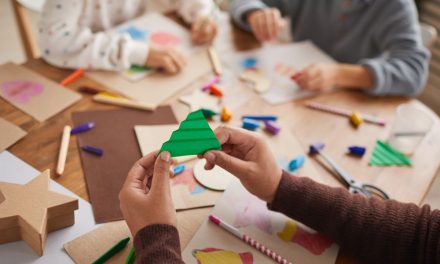Introducing children to the concept of green living and environmental responsibility is crucial for shaping a sustainable future. By engaging them in easy and fun green projects, we can instill in them a sense of care and respect for the environment from an early age.
These simple green projects for children not only promote hands-on learning but also encourage creativity, critical thinking, and problem-solving skills. From recycling crafts to planting gardens, there are numerous easy environmental projects that children can actively participate in.
By involving children in these projects, we empower them to make a positive impact on their surroundings while fostering a deeper connection with nature. These activities provide valuable opportunities to teach children about the importance of conservation, recycling, energy efficiency, and more.
In this section, we will explore a variety of easy green living projects suitable for children of all ages. Whether it’s creating homemade bird feeders or designing eco-friendly artwork, these projects will inspire young minds to become active contributors towards a greener and more sustainable world.
Teaching children about green living through hands-on projects is a fun and effective way to instill eco-friendly habits. Here are 20 easy green living projects for children:
- Create a Recycled Art Project: Use recycled materials like cardboard, paper, and plastic to create unique art pieces.
- Build a Bird Feeder: Construct a bird feeder using recycled materials. Hang it in your yard to attract local bird species.
- Start a Small Herb Garden: Plant herbs like basil, mint, or chives in small pots or a window planter.
- Make Seed Bombs: Create seed bombs by mixing clay, compost, and wildflower seeds. Toss them into areas that could use a little greenery.
- DIY Compost Bin: Build a small compost bin for kitchen scraps. Teach children about composting and how it benefits the environment.
- Upcycled Planters: Transform old containers, such as tin cans or plastic bottles, into planters for small flowers or herbs.
- Reusable Cloth Bags: Sew simple reusable cloth bags for grocery shopping or carrying items. Decorate them with eco-friendly fabric paint.
- Recycled Paper Making: Create recycled paper by blending scrap paper with water and forming new sheets. Allow them to dry and use them for drawings or notes.
- Energy Conservation Poster: Design a poster with energy-saving tips. Hang it in your home to remind everyone to conserve energy.
- Rainwater Harvesting System: Set up a small rain barrel to collect rainwater. Discuss the importance of using rainwater for plants.
- DIY Eco-Friendly Cleaning Supplies: Make environmentally friendly cleaning solutions using ingredients like vinegar, baking soda, and lemon.
- Nature Scavenger Hunt: Organize a nature scavenger hunt to encourage outdoor exploration and appreciation for the environment.
- Reusable Water Bottle Craft: Decorate and personalize reusable water bottles. Encourage the use of these bottles instead of disposable ones.
- Create a “No Waste” Lunch Kit: Assemble a lunch kit with reusable containers, cloth napkins, and utensils to reduce waste in school lunches.
- Build a Worm Compost Bin: Create a small vermicomposting bin with worms to teach children about the role of worms in composting.
- Bee-Friendly Garden: Plant flowers that attract bees and butterflies to promote pollination and biodiversity.
- Make Beeswax Wraps: Create beeswax wraps as an alternative to plastic wrap. Use them to cover food items.
- DIY Reusable Cloth Diapers: For families with young children, sewing reusable cloth diapers can be a sustainable and cost-effective project.
- Energy-Efficient Light Switch Reminder: Craft a simple reminder near light switches to encourage turning lights off when leaving a room.
- Earth Day Pledge Tree: Create a tree display where each family member writes down a green living pledge on a leaf. Attach the leaves to the tree as a commitment to sustainable practices.
These projects not only teach children about environmental responsibility but also provide opportunities for creativity and hands-on learning. Adjust the difficulty level based on the age of the children involved.





